Demolished 1857 (fire) Opened 1848 Cost 150,000 USD | Completed 1848 Client P. T. Barnum Destruction date 1857 Destroyed by Fire | |
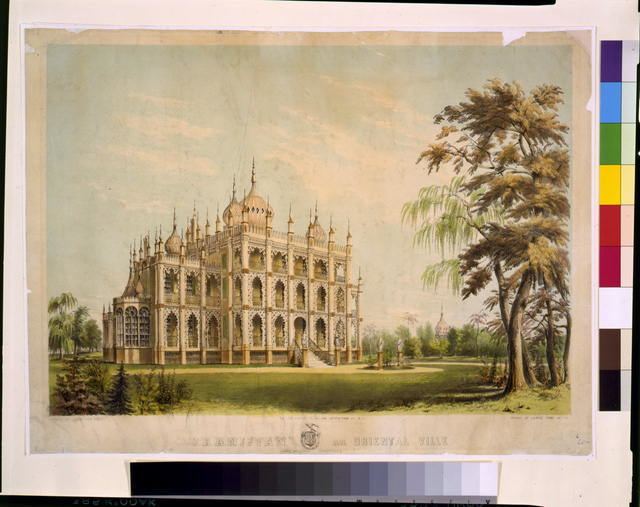 | ||
Town or city Fairfield and Iranistan AvenuesBridgeport, Connecticut Architectural styles Byzantine Revival architecture, Moorish Revival architecture Similar Barnum Museum, Barnum's American Museum, Mountain Grove Cemetery, Seaside Park, Niblo's Garden | ||
Fire on iranistan ave bridgeport
Iranistan was a Moorish Revival mansion in Bridgeport, Connecticut commissioned by P. T. Barnum in 1848. It was designed by an Austrian-American architect Leopold Eidlitz. At this "beautiful country seat" Barnum played host to such famous contemporaries as the Hutchinson Family Singers, Matthew Arnold, George Custer, Horace Greeley, and Mark Twain. The grandiose structure survived only a decade before being destroyed by fire in 1857. It was one of five such fires in the showman's life that "burned to the ground all his accomplishments".
Contents
- Fire on iranistan ave bridgeport
- Man shot in the head on iranistan ave bridgeport
- Construction
- Description
- Fire
- Museum
- Illustration
- References
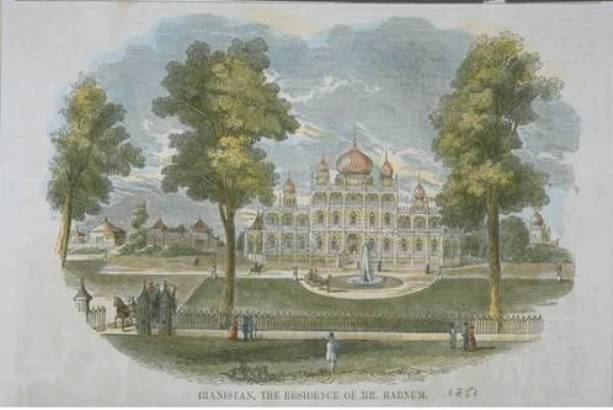
Man shot in the head on iranistan ave bridgeport
Construction
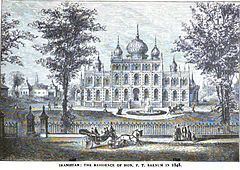
"Barnum’s most unique mansion" was designed by the New York architect Leopold Eidlitz, later a founder of the American Institute of Architects. It was a mix of Byzantine, Moorish, and Turkish decorative elements, inspired by the Royal Pavilion in Brighton, England, which Barnum visited shortly after its construction and admired.
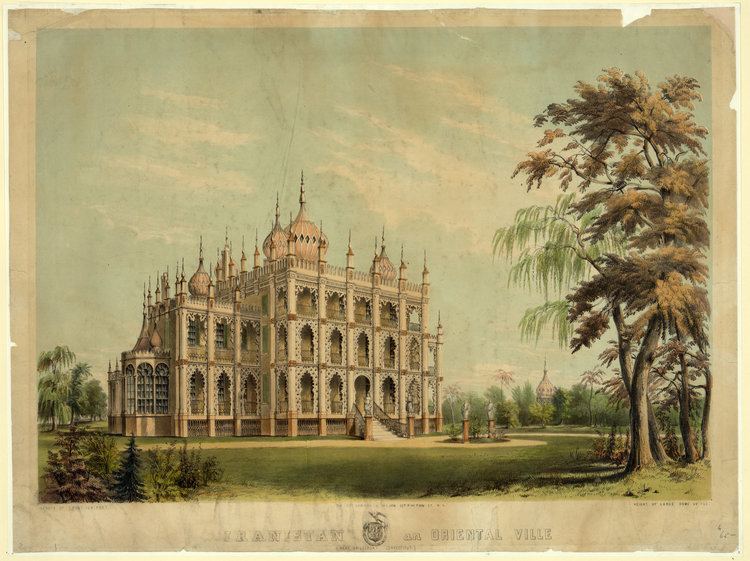
As such an architectural style had not yet become established in the United States, Barnum describes his efforts to have it built:
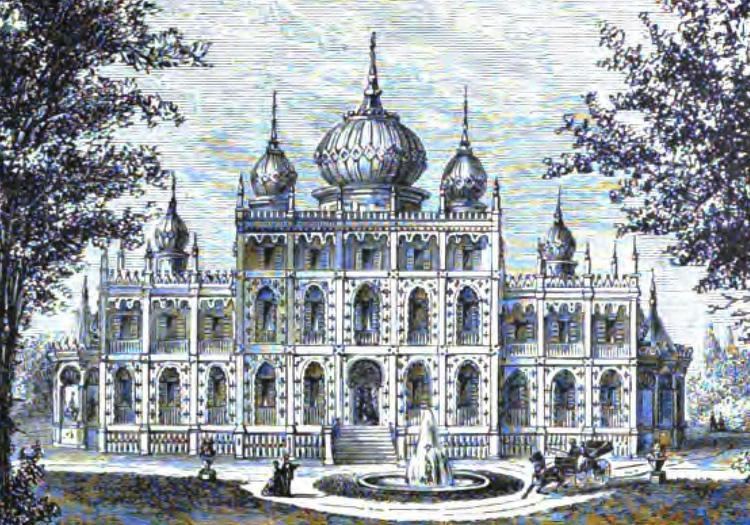
I concluded to adopt it, and engaged a London architect to furnish me a set of drawings after the general plan of the pavilion, differing sufficiently to be adapted to the spot of ground selected for my homestead. On my second return visit to the United States, I brought these drawings with me and engaged a competent architect and builder, giving him instructions to proceed with the work, not 'by the job' but 'by the day,' and to spare neither time nor expense in erecting a comfortable, convenient, and tasteful residence. The work was thus begun and continued while I was still abroad, and during the time when I was making my tour with General Tom Thumb through the United States and Cuba. Elegant and appropriate furniture was made expressly for every room in the house. I erected expensive water-works to supply the premises. The stables, conservatories and out-buildings were perfect in their kind. There was a profusion of trees set out on the grounds. The whole was built and established literally 'regardless of expense,' for I had no desire even to ascertain the entire cost.
By the time the house was completed in 1848 it had cost Barnum about $150,000.
Description

The architectural extravaganza on 17 acres (69,000 m2) of land was the first of four "famous" Bridgeport mansions built by Barnum. The fanciful three-story oriental-style structure had numerous porches and arches, the whole thing topped by multiple onion domes. A circular driveway curved around a fountain in the front of the house and urns stood at corners of the lawn.
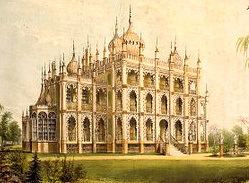
Iranistan had a greenhouse from which Barnum used to gather flowers for Sunday services at the local Universalist church. Barnum imported and kept a variety of choice livestock at this property and was soon president of the local Fairfield County agricultural society.
The Swedish opera singer Jenny Lind told Barnum that she would not have come to the United States if Barnum had not built Iranistan. Lind explained that she did not "relish the idea of crossing 3,000 miles (4,800 km) of water" and declined all offers until she received a letter from Barnum that was engraved with an image of Iranistan in its heading. Deciding that any gentleman successful enough to build "such a palace cannot be a mere adventurer", she agreed to an interview which she would have "declined if I had not seen the picture of Iranistan".
Fire
When Barnum experienced financial difficulties, he had Iranistan closed and it was unoccupied for more than two years. Carpenters and painters entered to do some work and had been ordered not to smoke in the building. They smoked after-dinner pipes there in the evening. A pipe left to smolder may have ignited a blaze after the workmen were gone.
The fire alarm was sounded at 11 PM on December 17, 1857 and the house burned until 1 AM. P.T. Barnum was staying at the Astor House in New York City. In the morning of December 18, he received a telegram from his brother, Philo F. Barnum, informing him that Iranistan had burned to the ground. Barnum had retained some insurance on the unoccupied mansion, but he collected only $28,000. Many pictures and pieces of furniture were saved from the fire, although much of the salvaged pieces were damaged. After the fire, bank assignees sold the property, including the surviving outbuildings, to Elias Howe, the inventor of a sewing machine.
Museum
The Iranistan seen in the A&E Network movie P. T. Barnum was a specially constructed model that now marks the entrance to the main gallery of the Barnum Museum. The museum also has a recreation of Iranistan's library that holds furniture designed by cabinetmaker Julius Dessoir and "showcases Barnum's distinctive taste."
